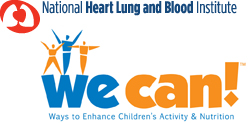Balanced ENERGY IN: Smart Food Shopping
Bringing balanced nutrition home to your family is made easier with a smart shopping list and knowledge about the Nutrition Facts label and healthy choices.
Read the labels as you shop and pay attention to serving size and servings per container. Compare the total calories in similar products and choose the lowest calorie items.
Why the Nutrition Facts label is important
- Check servings and calories. Look at the serving size and how many servings the package contains. If you consume one serving, the label clearly outlines the nutrients you get. If you double the servings you eat, you double the calories and nutrients, including the Percent Daily Value (% DV).
- Make your calories count. Look at the calories on the label and note where the calories are coming from (fat, protein, or carbohydrate). Compare them with the other nutrients, like vitamins and minerals, to decide whether the food is worth eating.
- Don't sugar-coat it. Since sugars contribute calories with few, if any, nutrients, look for foods and beverages low in added sugars. Read the ingredient list and make sure that added sugars are not one of the first few ingredients.
Some names for added sugars (caloric sweeteners) include sucrose, glucose, high-fructose corn syrup, corn syrup, maple syrup, and fructose.
- Know your fats. Look for foods low in saturated fats, trans fats, and cholesterol to help reduce the risk of heart disease (5% DV or less is low, 20% DV or more is high). Most of the fats you eat should be polyunsaturated and monounsaturated fats. Keep total fat intake between 20% to 35% of calories.
- Reduce sodium (salt), increase potassium. Research shows that eating less than 2,300 milligrams of sodium (about 1 teaspoon of salt) per day might reduce the risk of high blood pressure. Most of the sodium people eat comes from processed foods, not from the salt shaker. Also, look for foods high in potassium (tomatoes, bananas, potatoes, and orange juice) which counteracts some of sodium's effects on blood pressure.
We Can!™ is a trademark of the U.S. Department of Health and Human Services.


